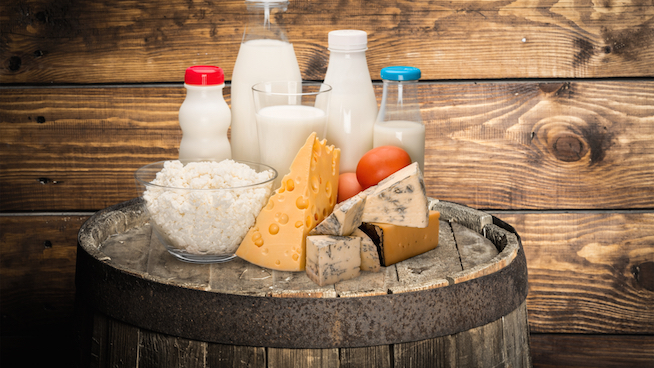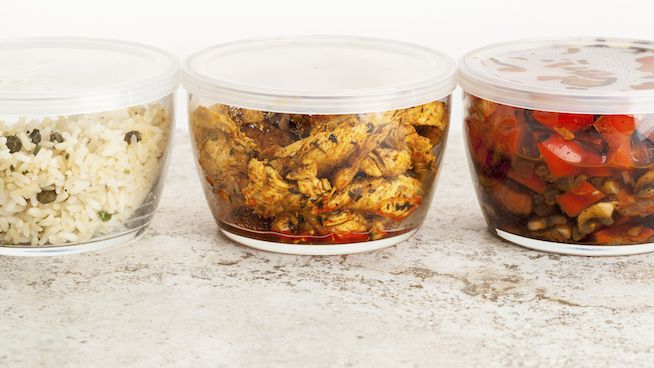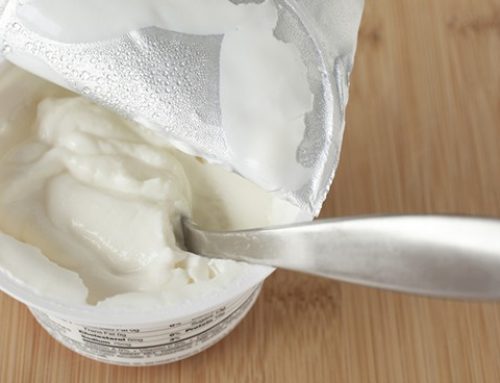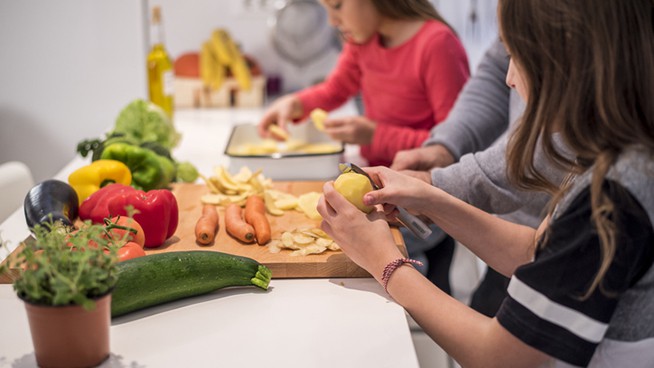Are You Making One of These Top 10 "Healthy Food" Mistakes?
There’s no shortage of nutrition experts offering advice to athletes. With new eating tips, food swaps and sample diets coming out each day, athletes trying to lead a healthy lifestyle must sort through a great deal of conflicting information. Even if you’re doing everything you can to eat healthy, chances are you’re making at least one of the following “healthy food” mistakes.
10. Orange Juice Is Just As Healthy As an Orange
Your morning O.J. may claim to be 100 percent juice and packed with nutrients, but it could be loaded with added sugar. Even an eight-ounce glass has a high calorie count. You can eat two oranges for the same amount of calories and sugar and get more than twice as much belly-filling fiber.
9. Low-Fat Yogurt Is Always a Safe Snack
Yogurt, especially Greek yogurt, is an excellent source of calcium and protein, but low-fat usually means high sugar. Look at nutrition labels when you select your creamy fix, and choose something with fewer than 20 grams of sugar. Even better, select plain yogurt and add your own fruit.
8. Carrots and Celery Go Great With Ranch Dressing
Any time you make a meal of veggies, it’s a great choice. However, even low-fat salad dressings and dipping sauces add bunches of calories. Ranch is fine for sprucing things up, but be careful about how many times you dunk.
7. Grilled Chicken Is Always Healthier
Grilled chicken is usually a safe bet if it’s prepared the right way. But calories add up fast when the chicken is smothered in sauce or loaded with toppings like cheese, bacon and even heart-healthy avocado. Grilled chicken can also be over-salted. Burger King’s TenderGrill Chicken and McDonald’s Premium Grilled Club deliver more than 1,000 grams of sodium per serving—more than half the recommended daily allowance! For fewer calories and less bloat, you could feast on a Whopper Jr. or a Quarter Pounder without cheese.
6. Granola and Trail Mix Are Perfect for All-Day Munching
Granola is full of fiber and antioxidants, making it a good choice in moderation. Unfortunately, trail mix is often loaded with sugar, so be sure to select brands without added salt or candy, and measure out your servings. Although nuts and dried fruits are “super foods,” they are still calorie-dense.
5. Turkey Bacon is Always the Healthier Option
Turkey meat is healthy and naturally lean, but the poor bird often gets hit up hard with salt. You can find healthy, low-sodium turkey bacon at the supermarket, but they also sell lean cuts of natural pork bacon. When dishing up this breakfast staple, choose either center cut slabs of regular bacon, or read the labels and go for a low-sodium turkey product.
4. Whole Flax Seeds Add Nutrition to Any Recipe
Full of heart-healthy omega-3, this trendy item has every right to be popular. Unfortunately, if you’re filling up on whole flax seeds, you’re missing out on some of their nutrients, because the body can’t absorb them all. Choose ground flax seeds and start spooning them into smoothies, yogurt and salads.
3. Healthy Foods are Good Regardless of Serving Size
When you start eating healthy, it’s easy to justify eating more. But just because something is good for you doesn’t mean you can forget about portion sizes. Calories sneak in when you don’t measure the milk you pour over your cereal, spoon peanut butter from the jar to your mouth, or share a bag of buttery popcorn with only one friend.
2. Granola Bars Are an Any Time Go-To Snack
In the world of portable snacks, it’s hard to top the cereal bar. Tasty, portable and filling, granola bars can be a healthy choice—if they have the right ingredients. Some granola bars are candy bars in disguise. Make sure the ones you select have at least three or four grams of fiber and protein, fewer than 10 grams of sugar, no hydrogenated oils and more whole grain than any other ingredient.
1. If It’s Labeled “Healthy,” It Must Be Healthy
Many foods besides granola are labeled “healthy” even though some are more processed than “junk” food. “Healthy” foods like hummus, sushi, protein shakes, smoothies and salads can get bogged down with unhealthy accompaniments. And restaurants are notorious for plopping a heaping serving of butter on top of steamed vegetables. Always read the nutrition label, and don’t be afraid to ask questions when you’re dining out.
RECOMMENDED FOR YOU
MOST POPULAR
Are You Making One of These Top 10 "Healthy Food" Mistakes?
There’s no shortage of nutrition experts offering advice to athletes. With new eating tips, food swaps and sample diets coming out each day, athletes trying to lead a healthy lifestyle must sort through a great deal of conflicting information. Even if you’re doing everything you can to eat healthy, chances are you’re making at least one of the following “healthy food” mistakes.
10. Orange Juice Is Just As Healthy As an Orange
Your morning O.J. may claim to be 100 percent juice and packed with nutrients, but it could be loaded with added sugar. Even an eight-ounce glass has a high calorie count. You can eat two oranges for the same amount of calories and sugar and get more than twice as much belly-filling fiber.
9. Low-Fat Yogurt Is Always a Safe Snack
Yogurt, especially Greek yogurt, is an excellent source of calcium and protein, but low-fat usually means high sugar. Look at nutrition labels when you select your creamy fix, and choose something with fewer than 20 grams of sugar. Even better, select plain yogurt and add your own fruit.
8. Carrots and Celery Go Great With Ranch Dressing
Any time you make a meal of veggies, it’s a great choice. However, even low-fat salad dressings and dipping sauces add bunches of calories. Ranch is fine for sprucing things up, but be careful about how many times you dunk.
7. Grilled Chicken Is Always Healthier
Grilled chicken is usually a safe bet if it’s prepared the right way. But calories add up fast when the chicken is smothered in sauce or loaded with toppings like cheese, bacon and even heart-healthy avocado. Grilled chicken can also be over-salted. Burger King’s TenderGrill Chicken and McDonald’s Premium Grilled Club deliver more than 1,000 grams of sodium per serving—more than half the recommended daily allowance! For fewer calories and less bloat, you could feast on a Whopper Jr. or a Quarter Pounder without cheese.
6. Granola and Trail Mix Are Perfect for All-Day Munching
Granola is full of fiber and antioxidants, making it a good choice in moderation. Unfortunately, trail mix is often loaded with sugar, so be sure to select brands without added salt or candy, and measure out your servings. Although nuts and dried fruits are “super foods,” they are still calorie-dense.
5. Turkey Bacon is Always the Healthier Option
Turkey meat is healthy and naturally lean, but the poor bird often gets hit up hard with salt. You can find healthy, low-sodium turkey bacon at the supermarket, but they also sell lean cuts of natural pork bacon. When dishing up this breakfast staple, choose either center cut slabs of regular bacon, or read the labels and go for a low-sodium turkey product.
4. Whole Flax Seeds Add Nutrition to Any Recipe
Full of heart-healthy omega-3, this trendy item has every right to be popular. Unfortunately, if you’re filling up on whole flax seeds, you’re missing out on some of their nutrients, because the body can’t absorb them all. Choose ground flax seeds and start spooning them into smoothies, yogurt and salads.
3. Healthy Foods are Good Regardless of Serving Size
When you start eating healthy, it’s easy to justify eating more. But just because something is good for you doesn’t mean you can forget about portion sizes. Calories sneak in when you don’t measure the milk you pour over your cereal, spoon peanut butter from the jar to your mouth, or share a bag of buttery popcorn with only one friend.
2. Granola Bars Are an Any Time Go-To Snack
In the world of portable snacks, it’s hard to top the cereal bar. Tasty, portable and filling, granola bars can be a healthy choice—if they have the right ingredients. Some granola bars are candy bars in disguise. Make sure the ones you select have at least three or four grams of fiber and protein, fewer than 10 grams of sugar, no hydrogenated oils and more whole grain than any other ingredient.
1. If It’s Labeled “Healthy,” It Must Be Healthy
Many foods besides granola are labeled “healthy” even though some are more processed than “junk” food. “Healthy” foods like hummus, sushi, protein shakes, smoothies and salads can get bogged down with unhealthy accompaniments. And restaurants are notorious for plopping a heaping serving of butter on top of steamed vegetables. Always read the nutrition label, and don’t be afraid to ask questions when you’re dining out.












